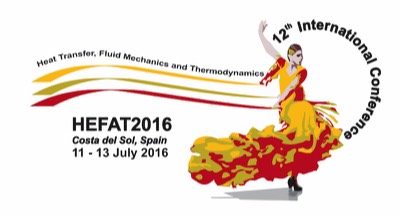Project Summary
This project aims to develop, optimize, and manufacture a novel micro-polymer hollow fibre heat exchangers (PHFHE) for various applications .
This light weight PHFHE can reduce the weight up to 50% compared with traditional metal heat exchanger, leading to at least 50% cost reduction. The small diameters of the fibres (micrometers) have thin walls and large surface area so heat transfer intensity is significantly increased. PHFHE can be applied in the following sectors:
1. Buildings: holllow membrane fibres for liquid desiccant cooling and non-porous capillaries for air heat recuperation, air heaters and fan-coils;
2. Automotive: car radiators with same thermal power as traditional radiators but 50% lighter;
3. Electronics:heat transfer units for cooling compact electronic devices;
4. Water desalination:air humidification by pervaporation through hollow fibre membranes;
5. Energy Storage: non-porous hollow fibres for encapsulating PCMs can enhance heat transfer for passive cooling and energy storage applications.
Work Packages
36 Month Project
Overall project to be led by SPIRAX with tasks spread amongst 6 work packages over 3 years.
-
1 - 36 Months WP1:
Management (SPIRAX)
All programming, decision making and review duties. Led by SPIRAX, WP1 will involve regular interaction between appointed PM, project steering committee, WP leaders, team members and TSB.
-
Months WP2:
Mathematical modelling
Design and optimisation of PHFHE product to maximise heat/mass transfer (UoN, SPIRAX and PAB) – Led by UoN, WP2 will develop a mathematical model to analyse the liquid/ gas heat and mass transfer mechanism inside PHFHE product.
-
Months WP3:
Prototype development
Construction and lab-testing (PAK, SPIRAX, UoN, ZENA, GGP, EV) – led by PAK, WP3 will develop PHFHE product prototype using various polymeric materials including PP (polypropylene), PEEK (poly ether ether ketone) and PTFE (polytetrafluoroethylene). The heat exchanger efficiency and heat transfer rate will be compared within PHFHE products manufactured by PP, PEEK and PTFE.
-
Months WP4:
Field trials of PHFHE
Prototypes in various applications (PAB, SPIRAX, UoN, ZENA, GGP, ESS) -led by PAB (specialised in producing metal HX for vehicles) and EPS (expert in HVAC system), WP4 will combine PHFHE product with prototypes with automotive industry and air conditioning system. Two sites, one in the good offices of PAB Coventry, another in Creative Energy Homes (UoN) will be identified to carry out the above mentioned field trials respectively. The overall heat transfer coefficients of these two systems will be tested and the results will be compared with those values of conventional metal heat exchanger.
-
Months WP5:
LCA
Economic and environmental assessment (EV, GGP, UoN) – led by EV, WP5 will carried out LCA and environmental sustainability assessment. The carbon emission reduction for manufacturing and utilising PHFHE products compared with these for metal heat exchanger will be compared.
-
Months WP6:
Dissemination & exploitation
(GGP, UoN and all) – to be overseen by all partners but led by GGP and UoN, running in parallel with all other activity. To comprise market review and monitoring, development of high profile case studies, product demonstrations in-situ and at events. A project exploitation manager also to be appointed.
Project Market
Low Carbon Energy
According to the market report by Acmite Market Intelligence (AMI), the global demand on heat exchangers was US$42.7 billion in 2012. With a growth of approximately 7.8% annually in the next years, the market is expected to approach US$57.9 billion by 2016 and. Stricter environmental regulations and ever-growing pressure of energy costs bring both challenges and chances for metal heat exchanger market. Together with the above disadvantages of metal heat exchanger, it is desirable to find an alternative material for heat-exchanger apparatus that can address these shortcomings and also acquire high heat-exchange efficiencies and be easily fabricated. This is where the use of polymer micro-hollow fiber plastic heat exchanger comes into place.
According to Society of Motor Manufacturers and Traders (SMMT), 2012 UK car productionwas about 1.5 million cars. Assuming the price of PHFHE is £100, i.e. half the £200 cost of the metal HX cost per vehicle. As a conservative estimate, the consortium aims at achieving an initial 2% market share by access to a large number of exising customers as well as other potential clients in automotive industry. 5% market share will be made possible through alliances with other large automotive manufacturers and auto parts suppliers in the UK through promotional campaingns and volume discount deals to help grow the market. After 5-10 years, a target 10% market share will be achieved by upgrading PHFHE products with European and global automotive producers and auto parts manufatures. Thus, the total market potential for PHFHE technology in the UK’s automotive sector is about £72.8 million in next 5years. Following the similair predication methods, the British potential market for PHFHE in desiccant cooling system is estimated to be £1.56 million in the next five years (detailed calculation see Appendix A). Moreover, due to the replacement of metal HX with PHFHE , great amounts of resources can be saved and high levels of waste can be eliminated, leading to significant annual energy saving and carbon reduction. This substantially contributes towards attaining the UK’s low carbon energy targets in 2050.














